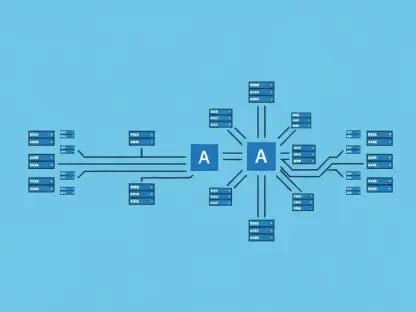Uncovering the Complex Reality Behind Modern Software Architectures
Despite the widespread adoption of microservices, many organizations face unexpected challenges, including inefficiencies and complexities often overlooked in initial architecture decisions. The allure of microservices lies in their promise to improve scalability and manage dependencies, yet the reality often paints a different picture. Understanding these nuances is crucial for making informed software architecture choices that avoid suboptimal outcomes.
From Monolithic Giants to Microservice Fever: Understanding the Architectural Evolution
The transition from monolithic architectures to microservices is largely driven by the quest for agility and resilience in software development. Initially heralded for their ability to decentralize operations and facilitate independent development, microservices captured the imagination of developers worldwide. The promise of breaking down applications into smaller, manageable components resonated as it offered solutions to some persistent challenges in software engineering, such as operational bottlenecks and scaling issues. This enthusiasm fueled a rapid adoption that significantly altered the landscape of software development.
The Mirage of Scalability and Simplicity in Microservice Architecture
A widespread belief among proponents of microservices is that they inherently enhance scalability and streamline dependency management. However, evidence suggests that microservices’ fragmented architecture introduces significant complexity in serialization and data handling. It is common for organizations to encounter increased CPU and memory overhead due to these processes. Case studies highlight scenarios where the move to microservices failed to deliver the promised efficiencies, burdening systems with additional resource demands and introducing unexpected bottlenecks.
Industry Experts Weigh In: Navigating Microservice Challenges
Experts in the field often provide a balanced perspective on microservices, acknowledging both advantages and significant challenges. Leading voices highlight the technical and organizational difficulties posed by the microservice model, pointing out the risks of increased operational complexity. Real-world examples from various organizations reveal struggles with managing microservice ecosystems, illustrating instances where expected gains were overshadowed by unforeseen hurdles. Academic research and industry surveys further question the blanket application of microservices, advocating for a more nuanced approach to choosing software architecture models.
Exploring Effective Alternatives to Microservice-Driven Designs
The search for effective architectural frameworks that mitigate dependency and scalability issues without relying on microservices is gaining traction. Innovative alternatives such as Active Events and stateless designs offer promising solutions, focusing on efficient communication within applications to minimize complexity. These alternatives, combined with tools like Kubernetes and lightweight design patterns, provide strategic pathways to address common software challenges. They suggest that benefits similar to microservices can be achieved through simpler, more efficient designs, fostering robust and scalable applications without the pitfalls associated with microservice architectures.
Moving Forward: Rethinking Architectural Choices and Embracing Diversity
Navigating the complexities and dynamics of modern software architecture requires evaluating the applicability of microservices on a case-by-case basis, rather than universally adopting them as a solution. The insights gained from industry leaders suggest that alternative models can offer more sustainable benefits, aligning with the operational goals of scalability and efficiency. Embracing diverse approaches, such as in-process models and stateless systems, provides actionable strategies and marks a crucial shift in architectural practices, underscoring the importance of tailored solutions to meet distinctive organizational needs.









